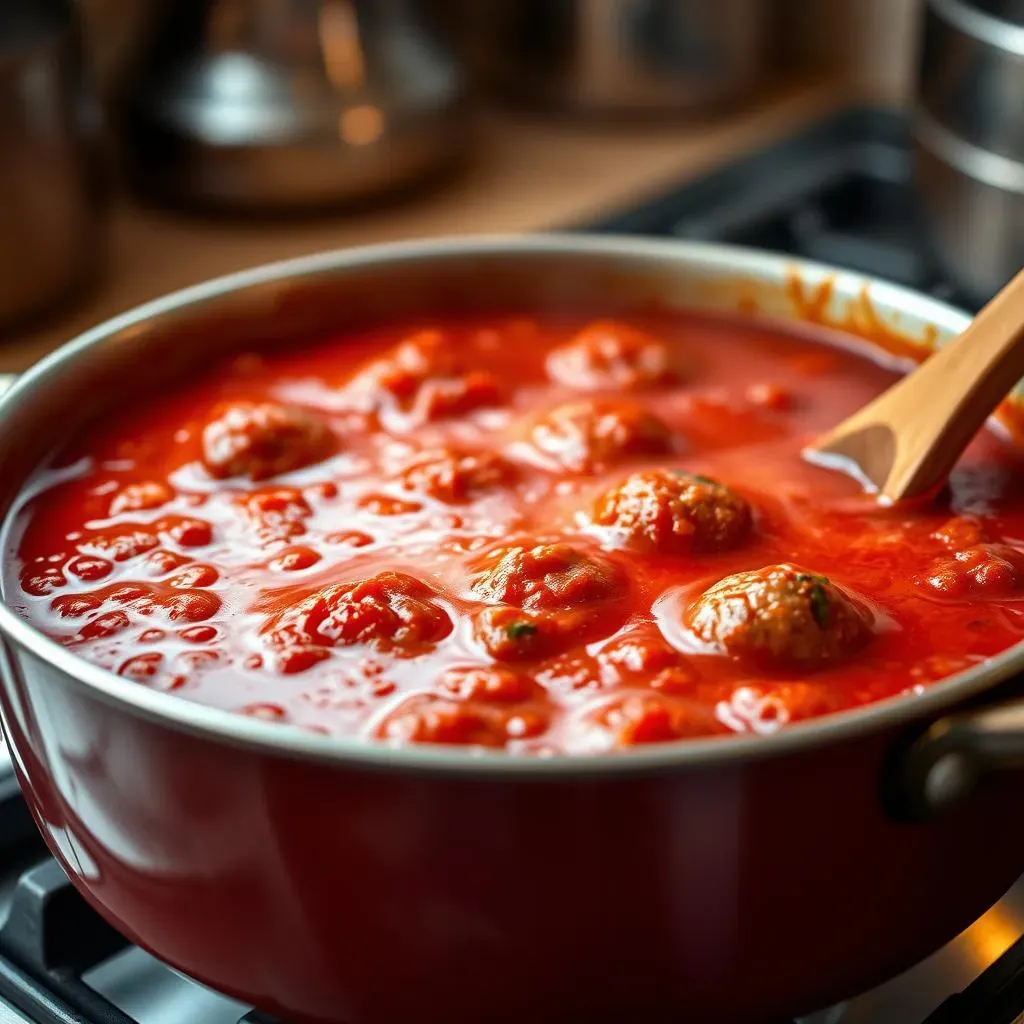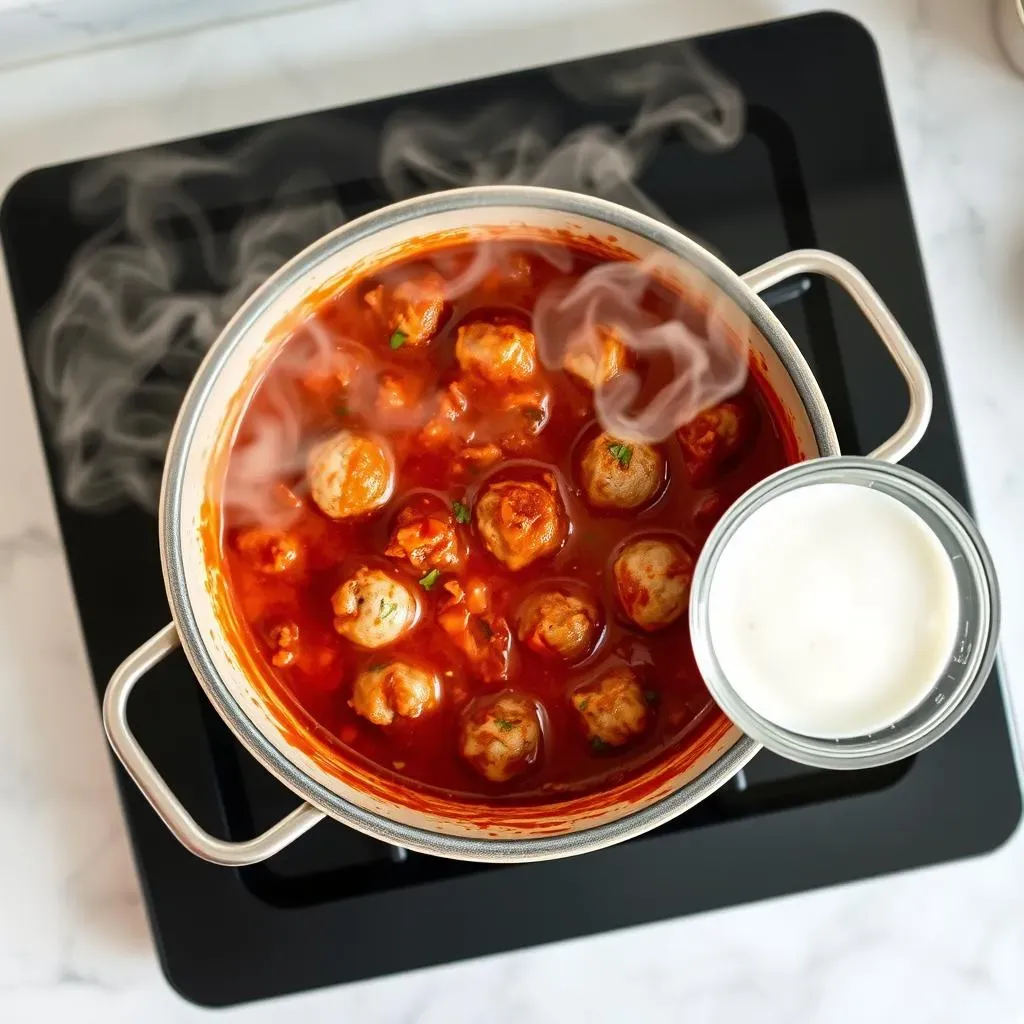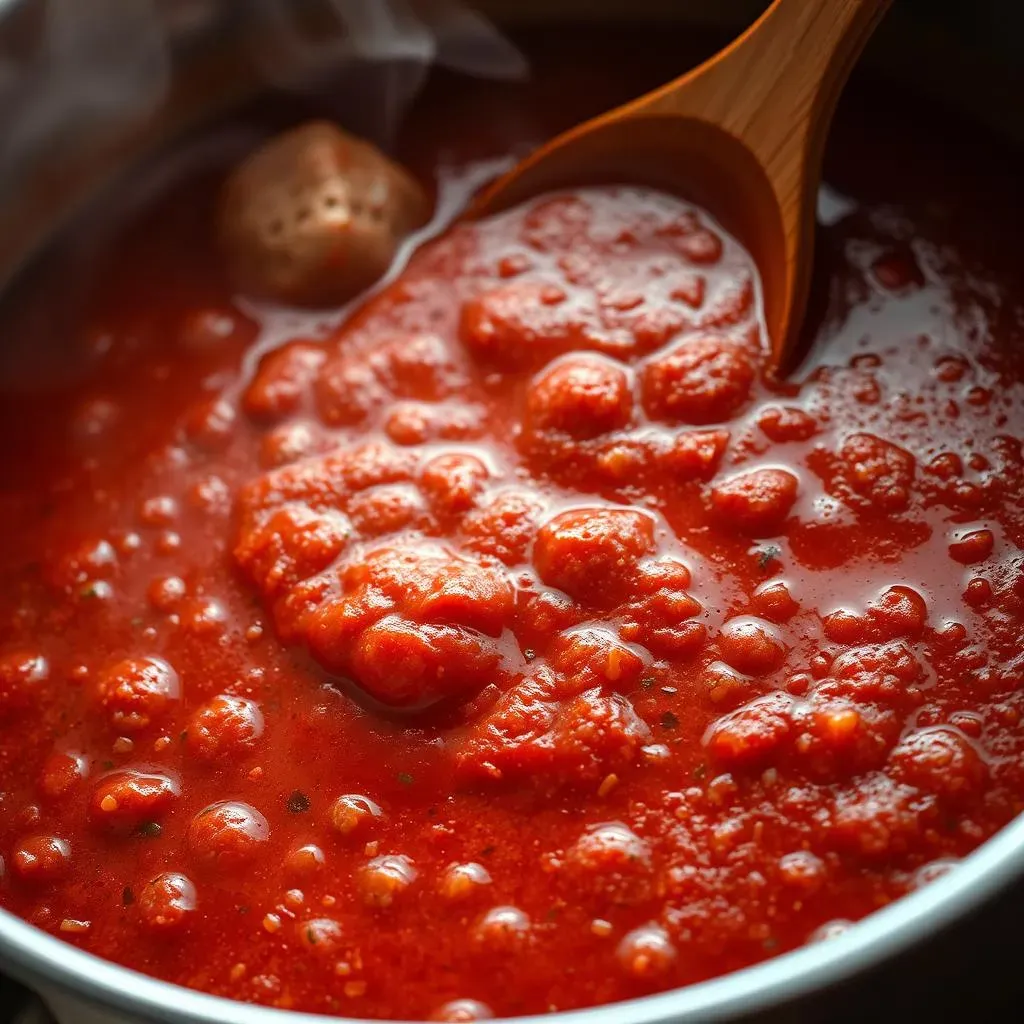Ever made a batch of meatballs only to find the sauce is disappointingly thin? It's a common kitchen woe, a culinary hiccup that can turn a promising meal into a watery mess. But don't worry, you’re not alone! The quest to achieve that perfect, clingy sauce is a journey many of us embark on. This article will be your guide, tackling the age-old question of how to make meatball sauce thicker. We’re not just aiming for any thick sauce, we want that rich, velvety coating that makes each meatball a flavor bomb. We'll explore various methods, from natural techniques that require patience to quick fixes that utilize common pantry staples. Get ready to transform your cooking game. By the end of this, you'll have the know-how to create a meatball sauce that's not just thick but also incredibly delicious. So, let's get started and turn that thin sauce into a culinary triumph. We'll cover simmering, flour and cornstarch solutions, and some less common but effective tricks to make meatball sauce thicker.
Simmering: The Natural Way to Thicken Meatball Sauce

Simmering: The Natural Way to Thicken Meatball Sauce
The Magic of Time
So, you want a thick meatball sauce, huh? Well, let me tell you about the simplest method: simmering. It's like the slow and steady wins the race approach to cooking. You know, instead of throwing a bunch of stuff in there, you just let the sauce hang out on the stove at a low temperature. It's not about some crazy technique, it's just about time and patience. The idea is that as your sauce simmers, the water evaporates. This leaves behind all the good stuff, like the tomato solids and the flavor, concentrating everything into a rich, thick sauce. It's a pretty cool process, if you ask me, a bit like letting a good story unfold.
Patience is Key
Now, don't get impatient and crank up the heat thinking it'll speed things up. That's a rookie mistake! High heat will just make your sauce bubble furiously, possibly burning at the bottom, and not necessarily thicken it any faster. The key is low and slow. You want a gentle simmer, just a slight bubbling, that's the sweet spot. Stir it occasionally to prevent sticking and to ensure even cooking. And here's a tip: don't cover the pot completely. You want some of that steam to escape, allowing the sauce to reduce. Think of it like you are helping your sauce to let go of the extra water, so it can become it's best, thickest self.
Simmering Tip | Description |
|---|---|
Low Heat | Maintain a gentle simmer, not a rolling boil. |
Partial Cover | Leave the lid slightly ajar to allow steam to escape. |
Stir Regularly | Prevent sticking and ensure even reduction. |
How to Make Meatball Sauce Thicker Using Flour or Cornstarch

How to Make Meatball Sauce Thicker Using Flour or Cornstarch
The Slurry Secret
so simmering is great, but sometimes you need a quicker solution, right? That's where our trusty friends, flour and cornstarch, come in. They're like the superheroes of the kitchen when it comes to thickening sauces. The trick is to not just dump them straight into the sauce. Instead, you need to make a slurry. Think of it like a pre-mix, a way to get the flour or cornstarch to blend smoothly without clumping. Nobody wants a lumpy sauce, trust me.
To make a slurry, you'll mix equal parts of your thickening agent (either flour or cornstarch) with cold water. Whisk it together until it's smooth, like a thin, milky liquid. This is crucial because if you add dry flour or cornstarch directly to hot sauce, it will clump up faster than you can say "meatball".
Thickening Agent | Slurry Ratio | Notes |
|---|---|---|
Flour | 1:1 (Flour:Cold Water) | Can add a slightly floury taste if not cooked long enough. |
Cornstarch | 1:1 (Cornstarch:Cold Water) | Gluten-free option, provides a glossy finish. |
Adding the Slurry
Now that you have your smooth slurry, it's time to add it to the sauce. Turn the heat on your sauce to medium, and make sure it is simmering gently. Slowly pour the slurry into the sauce while stirring continuously. This is important; you want to make sure the slurry blends into the sauce evenly. As the sauce heats up, you'll notice it begin to thicken. Keep stirring and let it simmer for a few minutes until you reach your desired consistency. This also helps cook out any raw flour taste, especially if you're using flour.
Remember, patience is still your friend here. Don't dump in a whole bunch of slurry at once hoping for instant thickness. It's better to add a little at a time, stir, and see how the sauce responds. You can always add more if needed. Think of it as a dance between you and your sauce, a little push and pull until you find the right balance.
Tips and Tricks
Here's a little pro-tip, if you are using flour, you might need to simmer the sauce a little longer to get rid of that raw flour taste. Cornstarch is more forgiving in that department. Also, if you're gluten-free, cornstarch is your best bet. It gives the sauce a nice, glossy sheen too. And if you are looking for a richer flavor, you can use a bit of tomato paste, it can act like a thickening agent and also add a nice depth of flavor.
So, there you have it, a quick and easy way to thicken your meatball sauce using flour or cornstarch. It's all about the slurry and adding it slowly. Now, you can say goodbye to those watery sauces and hello to thick, delicious perfection.
Other Methods to Make Meatball Sauce Thicker

Other Methods to Make Meatball Sauce Thicker
The Reduction Route
so maybe you're not feeling the flour or cornstarch today, and that’s totally fine. There are other paths to a thick and luscious meatball sauce, and some of them are pretty cool. One such method is to just go back to basics and reduce, reduce, reduce. Similar to the simmering method, this involves letting the sauce cook down, but often at a slightly higher heat. The goal here is to evaporate excess liquid, leaving you with a more concentrated and thicker sauce. It’s a bit like giving your sauce a spa day, letting it relax and lose some of its extra baggage, if you know what I mean.
Now, you might be thinking, "Isn't that just simmering?" Well, yes and no. While simmering is gentle and slow, reduction can be a bit more aggressive, but you still need to keep an eye on it. You’ll want to keep the heat at a medium level, enough to see some steam rising, but not so high that it’s splattering all over your stove. Stir it more often than you would when simmering, just to make sure nothing sticks to the bottom. And remember, the longer it reduces, the thicker it will get, and the more concentrated the flavor will become. So, if you're going for a super-intense sauce, this is definitely the route for you. Think of it as a way to amplify all the good tastes already in your sauce.
Reduction Technique | Heat Level | Stirring Frequency |
|---|---|---|
Moderate Reduction | Medium | Frequently |
Intense Reduction | Medium-High (with caution) | Very Frequently |
Secret Ingredient Boost
Alright, let's talk about some secret weapons in the battle against watery sauce. These are the things that might not be your first thought but can make a huge difference. We’re talking about things like tomato paste, pureed vegetables, or even a bit of bread. Yes, you heard that right, bread! Tomato paste is a great option because it not only adds a rich tomato flavor but also helps to thicken the sauce due to its concentrated nature. A few tablespoons of it can go a long way, especially if you’re starting with a relatively thin sauce. It's like adding a flavor and thickness booster all in one.
Pureed vegetables, like carrots or zucchini, are another sneaky way to thicken without altering the flavor too much. Just blend them up and mix them into the sauce. They'll add body and a bit of natural sweetness. And the bread trick? It’s an old-school method. Just tear up a slice or two of stale bread and let it simmer in the sauce. The bread will absorb some of the liquid and break down, adding a subtle thickness. It’s like a culinary magic trick, turning something old into something amazing. These methods are great because they not only thicken the sauce but also add a little something extra, whether it's flavor, nutrients, or just a bit of old-school charm.
Wrapping Up: Achieving the Perfect Thick Meatball Sauce
So, there you have it, a collection of methods to tackle thin meatball sauce. Whether you choose to simmer patiently, whisk in a slurry of flour or cornstarch, or experiment with other thickening agents, the key is to adjust to your preference. Don’t be afraid to experiment and find what works best for your taste and sauce consistency. With a little practice, you'll be making meatballs with a perfect, luscious sauce every time. Remember, cooking is an adventure, and sometimes a little thickening is all you need to make a good meal great. Now go forth and conquer those sauces!